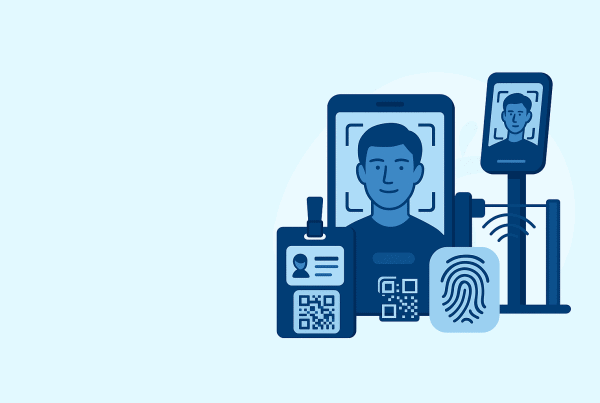We’ve seen how virtual & hybrid job fairs can speed recruitment and although hosting a virtual career fair implies a much easier and faster set-up process, it still takes a lot of hard work to run it as smoothly as possible. Fortunately, we’ve developed an ultimate guide to hosting an online job fair, where we’ve outlined the 4 most important steps.
1. Define a strategy
Envisioning what’s the future of events, it’s time to focus on upcoming opportunities, challenges and tech-based solutions to further streamline the recruitment processes. And if you haven’t already done so, you should first integrate a virtual strategy into your recruitment events.
So, like developing any other strategy, you should set specific goals and know what you’re targeting at. We suggest that you start by asking these general questions:
- What’s the scope of your job fair?
- What’s your expected attendance rate?
- What are the goals / KPIs you´re looking to achieve?
- What’s the target date for your virtual job fair?
If you’re the hiring company, you can go any deeper into more specific matters:
- Are you simply going to provide an overall brand experience or are you going to focus on specific job opportunities?
- Do you want to conduct video job interviews or just promote corporate content amongst candidates?
- What’s the content you want to share with candidates before an interview?
- How much time will you have to create relevant content?
2. Define a budget
We all know that hosting and organizing a virtual career fair is a cost-effective way of recruiting. However, your investment could vary depending on several factors. Among them are:
- The number of online events you want to host (How long does the fair will last? It will be 24/7?)
- The features / extra services you want to be added to your virtual fair (How much time do you need your virtual fair to be available online? How many live streaming hours will you possibly need?)
- The scope you previously defined for your job fair (How far are you willing to go to involve and capture the best talent?)
As soon as you have defined the budget, it’s time to get in touch with some software providers to get pricing and product information. To help you complete this step, you can always get tailored pricing information here.
3. Choose the platform that better fits your needs
There are several online platforms and technology for virtual career fairs for some time now. Don’t forget that virtual recruiting is a concept that precedes the current bans on large gatherings due to the COVID-19. So, your very first step should be to choose the right virtual fair platform by taking into account these features:
- Interactions & communication – As a company, how can you connect with job seekers? Is it possible to start an online chat conversation, or schedule a video call interview? What about hosting specific Q&A sessions and workshops?
- Design & customization – Is it possible to deliver a fully-branded virtual experience within virtual stands? Will your requests for customization be entertained?
- Changeover to other scenarios – How flexible is the platform? Does it allow you to pivot back to live or hybrid job fairs while keeping the benefits of the virtual scenario?
- Data & analytics – How will you analyze your job fair networking? The valuable interactions that happened during your career fair should get reported somehow. Plus, real-time data will give you instant feedback from the candidates attending your virtual job fair. Remember, your event marketing ROI should be treated just like any other marketing field and also play an important role for the overall marketing strategy of your job fair.
-
The recorded feedback will be crucial to measure your event ROI and help improve your performance at future career fairs and virtual events.
- Security – As any other online event, virtual job fairs require intensive sharing of personal information. So, you need to ensure that data doesn’t end up in the wrong hands. And the only way to guarantee that is with a secure virtual event platform provided by a reliable and accountable tech partner.
- Technical & staff support – With a virtual recruiting event, chances of any technical failures in between are almost always unexpected. And as your recruiters and candidates also expect instant support, it’s better to be prepared to call for assistance from your software provider. Thus, you should opt for a solution that can be delivered as a managed service with either on-site or off-site support, depending on your fair’s needs. A clever tip is also to take a dry run before the actual job fair takes place.
-
The premise should be simple – the right platform should allow you to deliver a memorable user experience for both candidates and companies, capable of copying the look & feel of a real life job fair.
4. Event marketing & engagement
You definitely don’t want to rush the setup and marketing of your virtual career fair. And promoting your event by making the most of social media to get audience traction and create buzz around your job fair is a great idea to ensure you’re going to meet your expected attendance rate.
However, your real-time marketing begins just when your job fair starts and it’s important to look beyond a list of current positions. In this regard, you can share some ideas with the companies that booked a virtual stand at your virtual career fair, such as:
- Ensuring a simplified application process with short forms and quick links (nobody likes to fill heavy forms);
- Having interesting Q&A sessions & live chats (opening gates for two-way communication);
- Adding some type of gamification (helping them with candidates’ retention) – running contests like leader board or using sponsored prizes can be an amazing idea to get their recruitment process to the next level;
- Including fun corporate videos and downloadable lists of benefits (that students can get by joining their ranks).
-








